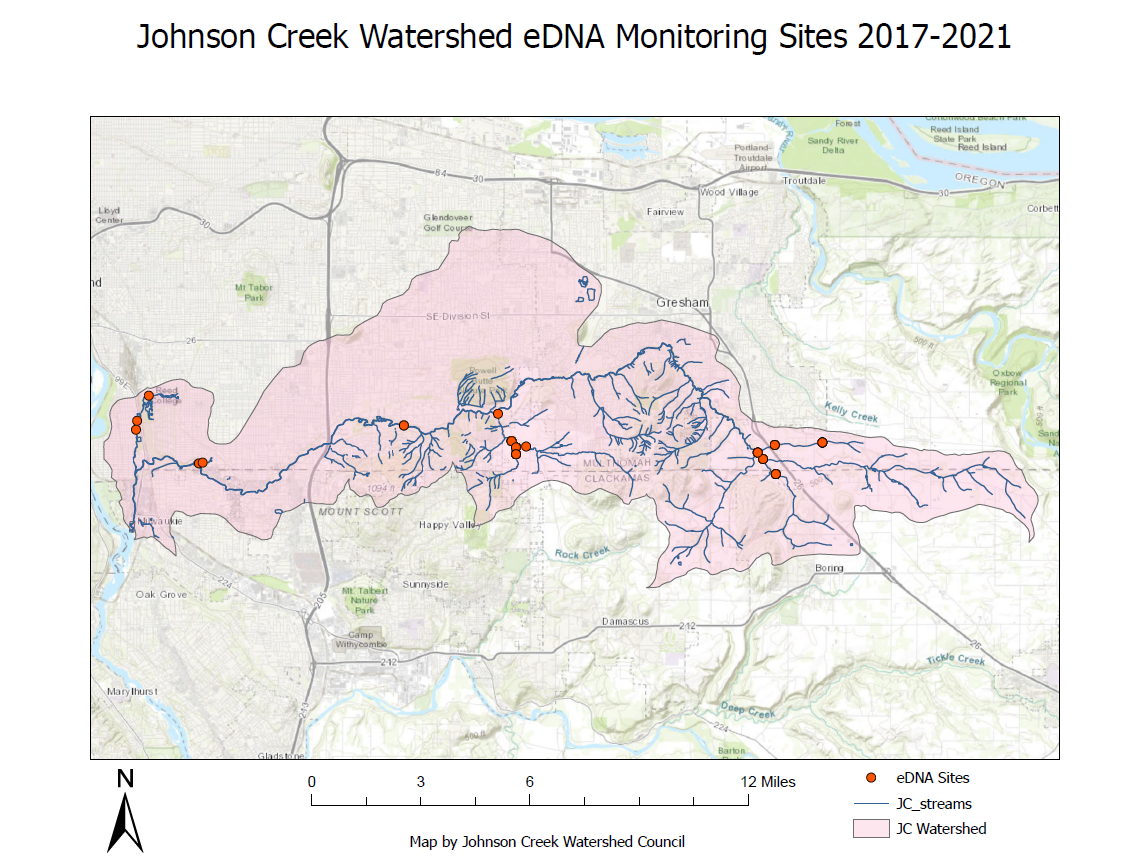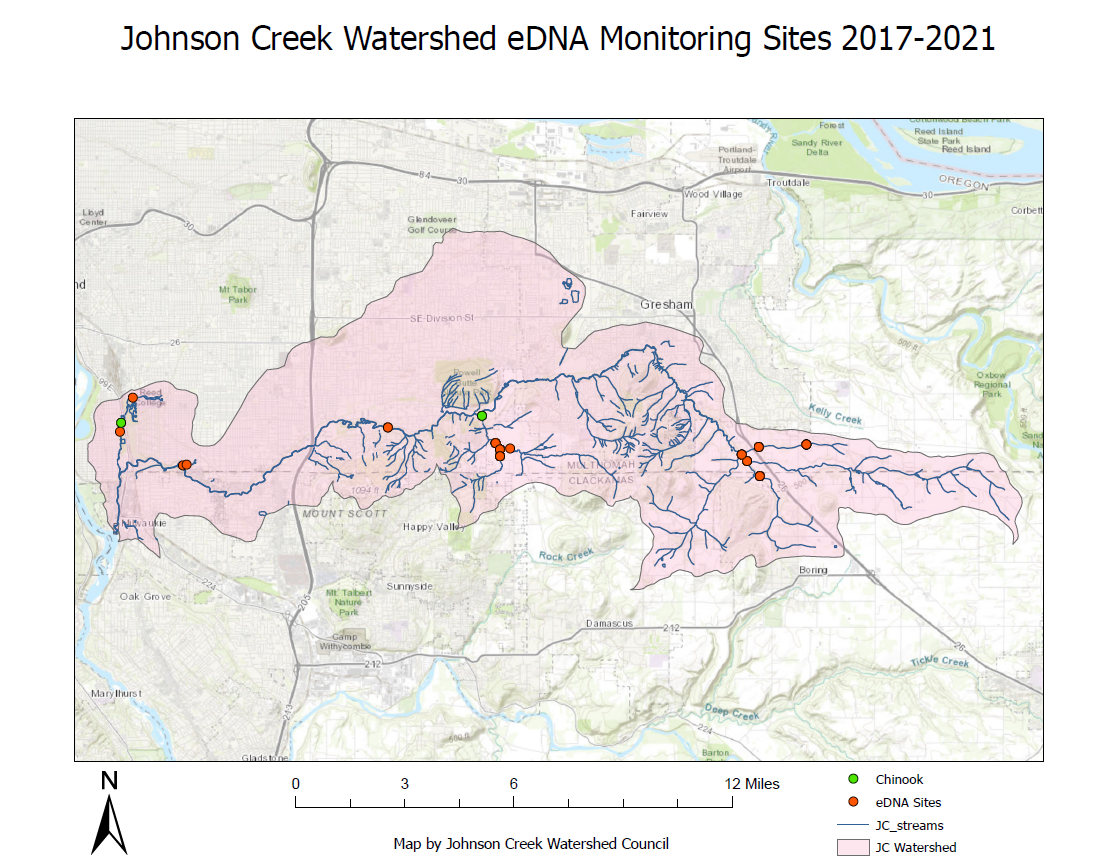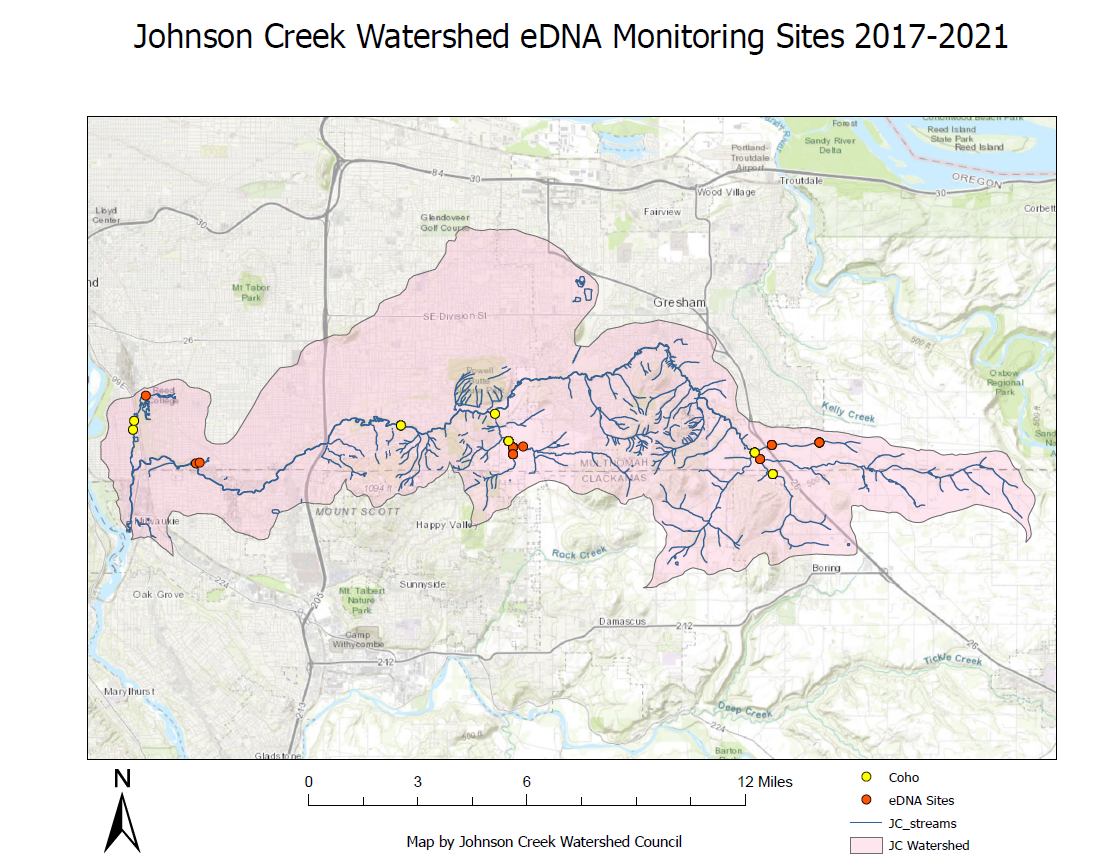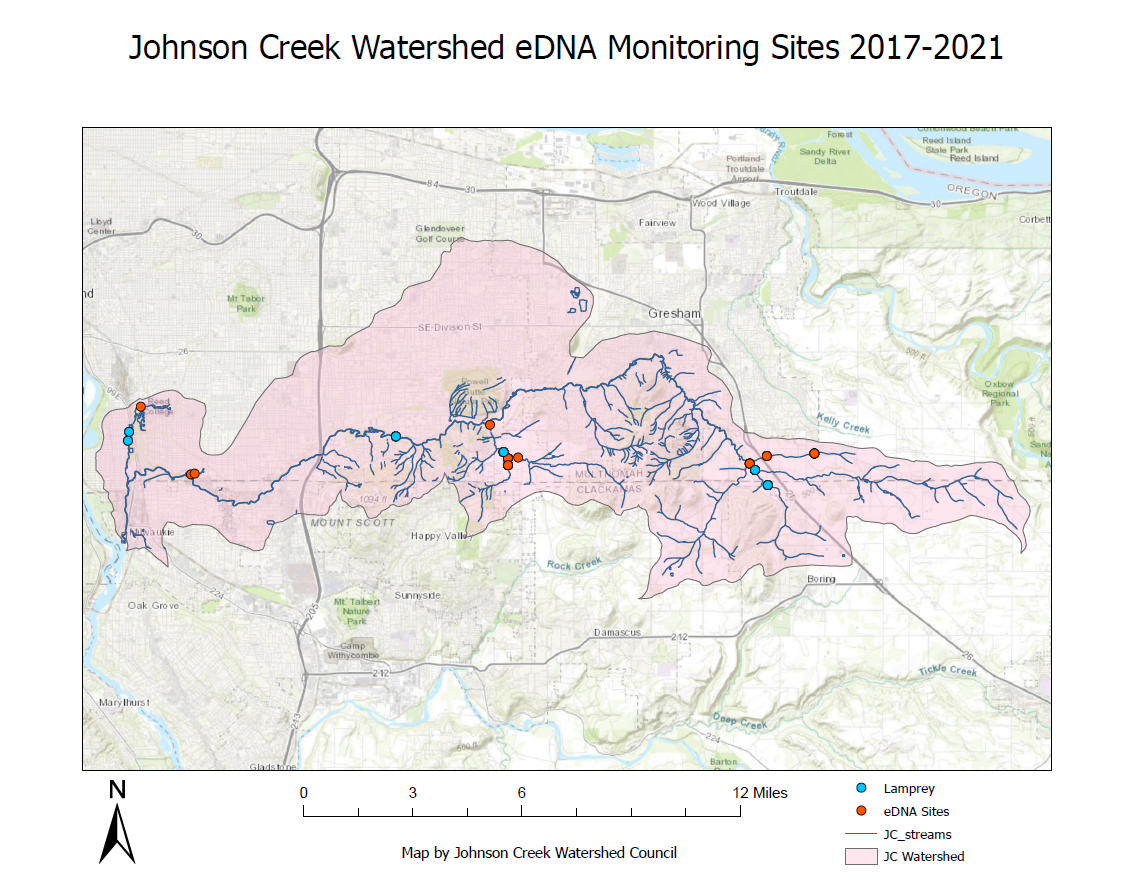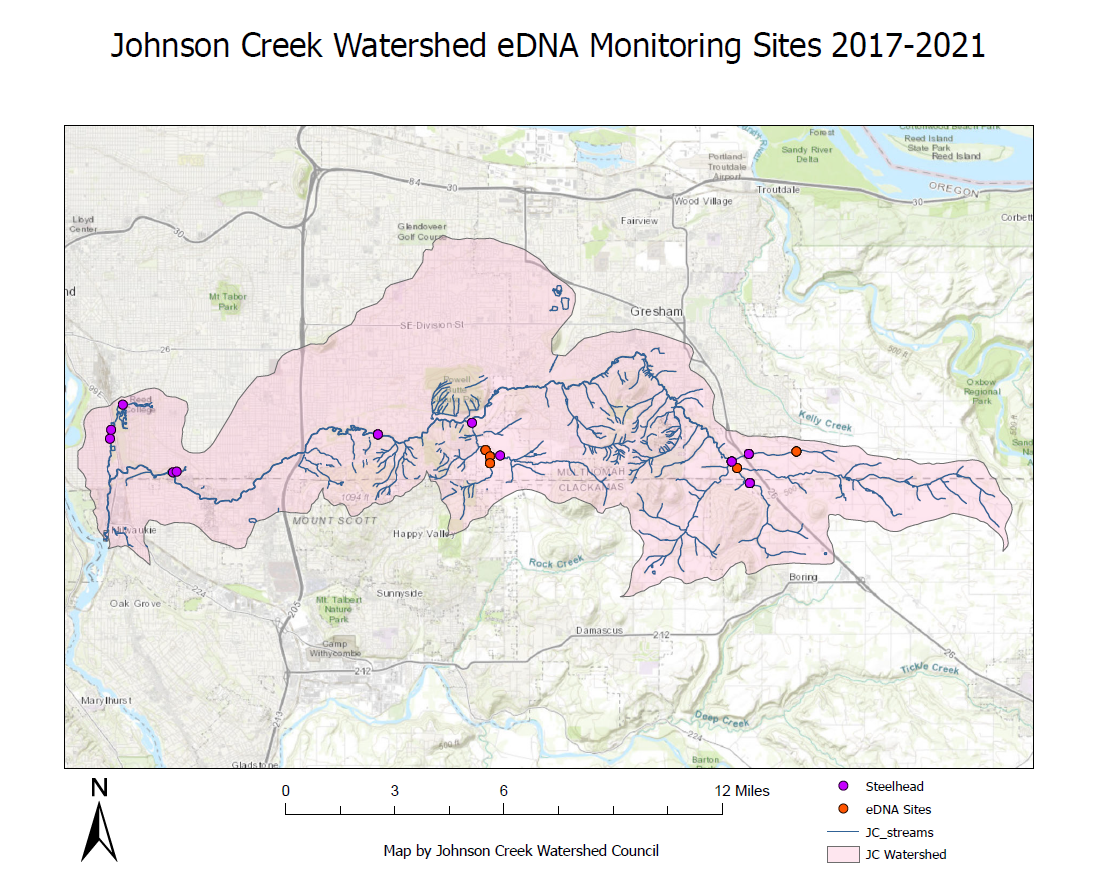At the end of April Johnson Creek Watershed Council staff headed out to Leach Botanical Garden in search of salmon. Well… salmon DNA. The goal of Johnson Creek’s eDNA program is to determine the effectiveness of fish passage projects by identifying the presence of four species of interest, coho Salmon, chinook Salmon, steelhead/rainbow trout, and Pacific lamprey, at former and future project sites and locations of interest.
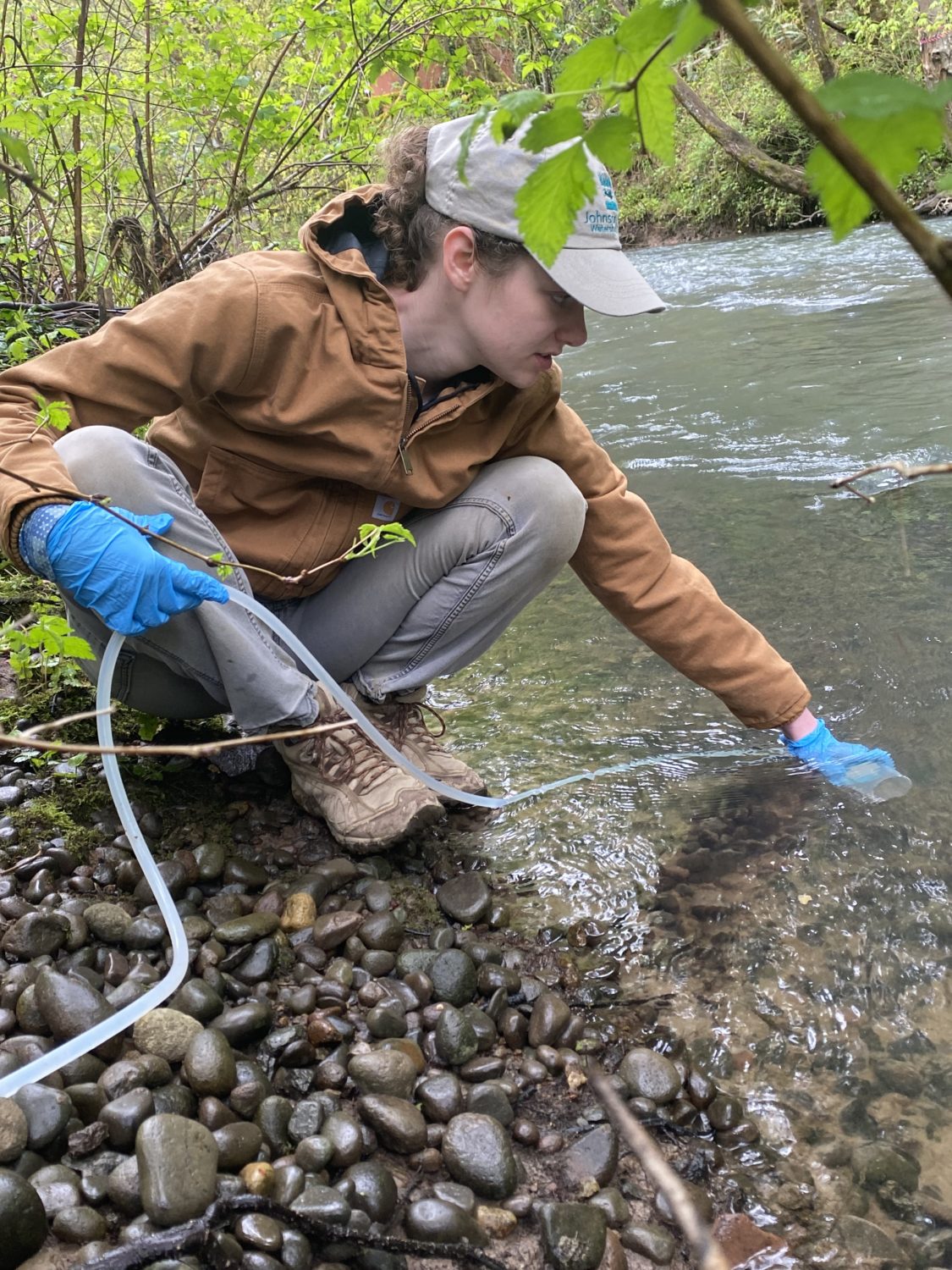
“Environmental DNA or eDNA protocols allow for rapid, cost-effective, and standardized collection of data about species distribution and relative abundance. eDNA is nuclear or mitochondrial DNA that is released from an organism into the environment. Sources of eDNA include secreted feces, mucous, and gametes; shed skin and hair; and carcasses” (USGS). “For small, rare, secretive, and other species that are difficult to detect, such as salmon, eDNA provides an attractive alternative for aquatic inventory and monitoring programs” (USGS).
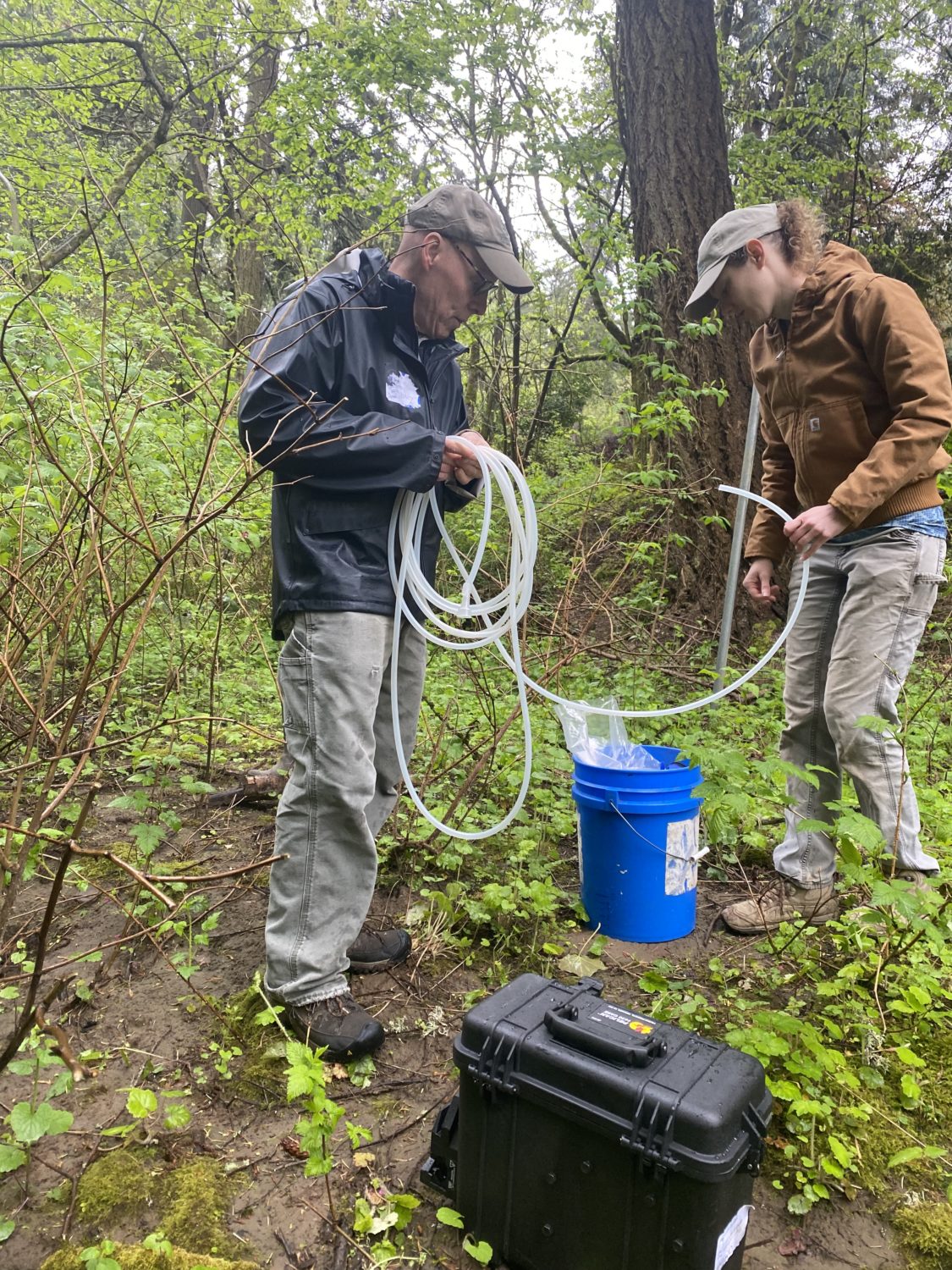
We currently sample for eDNA at eight sites throughout the watershed these sites include: Mitchell Creek, Kelley Creek, and Badger Creek, North Fork, and the mainstem Johnson Creek. Sampling occurs twice a year, in April for juvenile detection and in October/November for adult/spawning detection.
Samples are taken by pumping five liters of stream water through a filter with a pump. The filters are supplied by the US Forest Service Rocky Mountain Research Station. After sample collection our little filters make their way to Missoula, Montana to get processed!
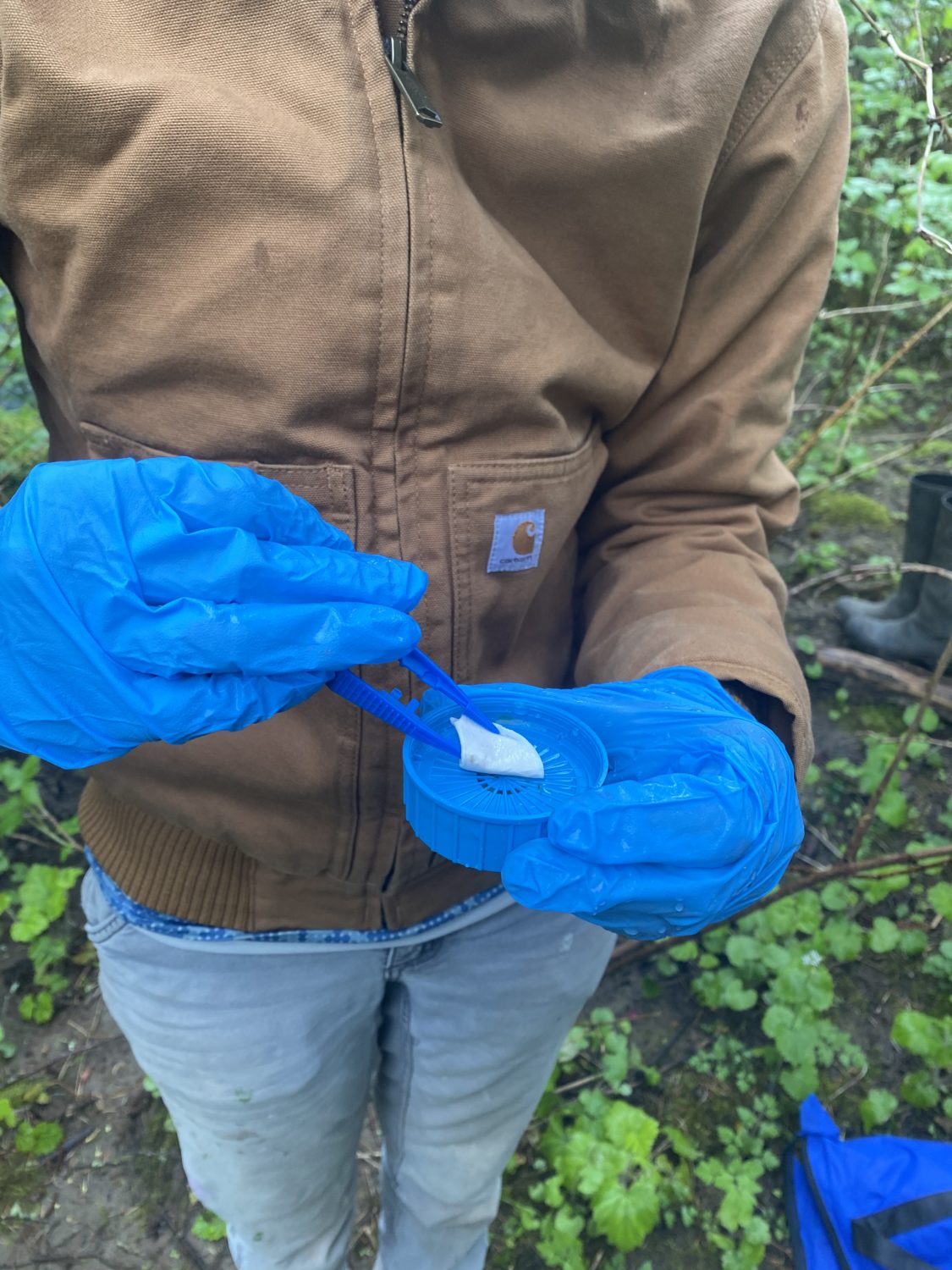
Our first sampling was done in the fall of 2017 at only four sites and results came back positive for coho salmon in Badger Creek, a site where we had removed our #1 priority fish passage barrier the previous year. Since then, a total of 17 sites have been monitored and we have had positive detections of all four of our species of interest at different locations! Check out the maps below to see our positive detection sites and stay tuned for results from 2022!
All points on the map represent eDNA testing sites, on maps two-five green, yellow, blue, and purple dots represent sites with results positive for eDNA for the respective species. Maps made by Daniel Newberry. Note that steelhead salmon and rainbow trout are so similar that it’s not possible to tell the difference by eDNA testing.
